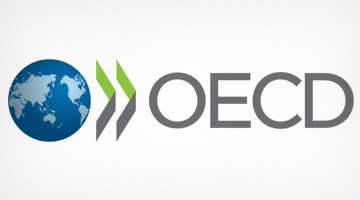Revival of entrepreneurial activity in most economies: OECD Report
By TIOL News Service
 |
NEW DELHI, SEPT 29, 2016: THE post-crisis recovery in entrepreneurial activity remains mixed across countries, but new data released today by the OECD provides tentative signs of a turning point, with trends in enterprise creation rates pointing upwards in most economies.
Entrepreneurship at a Glance 2016 suggests that a revival in entrepreneurial activity could help improve economic growth and provide an important longer-term boost to productivity, given the correlation between start-up rates and productivity growth.
The report shows that post-crisis growth in Europe has been more dependent on small and medium-sized enterprises (SMEs) as drivers of economic growth than the United States. It also offers new evidence that small firms face greater challenges than large firms in breaking into emerging markets.
Data in this year’s report from a new, innovative online monthly survey prepared by Facebook, the OECD and the World Bank also points to a more positive outlook among new entrepreneurs.
The Future of Business Survey, which covers small businesses with active Facebook sites in 22 countries worldwide, provides new insights on the importance of creative destruction and innovation. It shows that the proportion of young firms - those that are less than three years old - that have a more positive outlook and expect to increase employment in the short term is higher than the corresponding proportion of established firms - those that are more than 10 years old - in nearly all countries.
But the OECD report also confirms that most countries continue to show gender gaps in factors that are key to entrepreneurship, despite the new evidence from the Future of Business Survey that reveals that, once up and running, women are as confident as men about their business. Men are on average more likely to declare that they could access funding to set up a business and that they have the training to do so. These gender gaps likely explain differences in outcomes: 5.1% of men aged 15-24 are self-employed, versus 3.6 percent of women in this age group, while 29.2% of employed men aged 55+ are self-employed, compared with 15.9% for women.
“No single indicator can adequately cover a topic as complex as entrepreneurship,” said OECD Chief Statistician Martine Durand. “It is by looking at a series of factors - from market conditions to the regulatory framework, enterprise culture and access to finance – that we are able to fully take the pulse on the state of entrepreneurial activity and make policy recommendations that will contribute to enhancing it.”
Key findings:
++ Trend start-ups remain below pre-crisis rates in most OECD economies, with rates in Belgium, Finland, Germany, Iceland, Italy and Spain between 20-50% lower. Canada, France, the Netherlands, Norway, Sweden and the United Kingdom had higher rates at the end of 2015 and beginning of 2016. Trends in the most recent periods however are pointing upwards in most countries, notably in France, New Zealand and Sweden; although they remain weak in Italy and Finland.
++ Bankruptcy rates in 2015 were significantly below pre- crisis levels in Canada, Brazil and South Africa and around 15% to 25% lower in Germany, Japan and the United States. By contrast, they were significantly higher in Austria, France, the Netherlands and Norway, and were over double their pre-crisis rates in Italy and nearly four times as high in Spain, although recent quarter on quarter trends point strongly downwards in both countries.
++ In the US, growth in the number of large enterprises has outpaced that of SMEs, whereas in Europe the opposite is true. Growth in the number of SMEs in the euro area has outpaced growth in the US but the reverse is true for large enterprises. Because SMEs typically have lower labour productivity, this may point to structural factors underpinning the productivity gap between the euro area and the United States.
++ Small firms typically only export to neighbouring markets, revealing behind-the-border trade barriers. European small/micro-enterprises account for nearly 20% of trade with nearby destinations, but only for slightly more than 5% of exports to China, Japan or the United States. Fostering export opportunities to new, particularly emerging, markets, and helping address barriers to SME trade can stimulate growth and entrepreneurialism.
++ Very few SMEs export in tangible capital-intensive industries. But, disproportionately more do so in activities that are built on knowledge capital, such as marketing or design, or other niches, where intangible capital plays a greater role than tangible. Policies that nurture SMEs in knowledge-based sectors and niche activities can be a route to export success.
Entrepreneurship at a Glance presents indicators of entrepreneurship collected by the OECD-Eurostat Entrepreneurship Indicators Programme (EIP). Started in 2006, the programme develops multiple measures of entrepreneurship and its determinants according to a conceptual framework that distinguishes between the manifestation of entrepreneurship, the factors that influence it, and the impacts of entrepreneurship on the economy.
|














